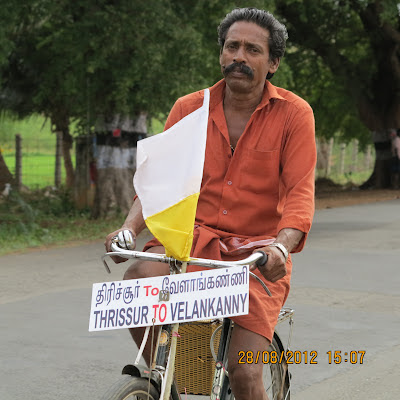This is a revealing photo of a group of children, whom I met in a village. I have no clue why the girl in this picture preferred to pause with her knees bent. She refused to stand erect in spite of my request. It was not because of any physical ailment as she was running and playing with no indication of any physical discomfort.
The boys in the picture were her neighbors. I got an insight about why this girl paused this way, when I heard about what girls go through daily, in a rural setting, from a senior friend.
Most girls get up early in the morning and go out to fetch water with their mother. Sometimes it is long walk of half hour or more one way. They then clean the court yard and sprinkle water all around the house. By then the mother would have got everything ready to begin the cooking for the household for breakfast and lunch. That gives a girl hardly anytime to get ready for school. They often walk long distance to school, sometimes missing breakfast. Many girls have one large meal in a day, which is the mid day meal provided free at school.
On return from school, the girls join their mother in cooking, washing up and getting the clothes ready for the next day for the men and boys at home. By then it is past ten at night and they go to bed tired sleeping on a mat, while boys get the privilege of sleeping on a mattress. Many girls, in spite of advocacy for gender equality by well meaning people, live reduced lives. Boys are preferred to girls and treated better at home.
This photo, where the girl pauses with her bent knees is a true portrayal of what she is made to feel by the domineering boys.
Many girls grow up subdued, harassed and exploited. The adult men and boys are responsible for this. Girls are denied all the courtesies they rightly deserve. It is rare to see men or boys get up and offer a seat during a bus travel to women. Sometimes women carry their infants in their arms and travel standing. Neither the bus conductor or men around feel concerned. This must change.
I am an activist committed to restore fullness of life and opportunity to girl children!
M.C.Mathew (text and photo)































